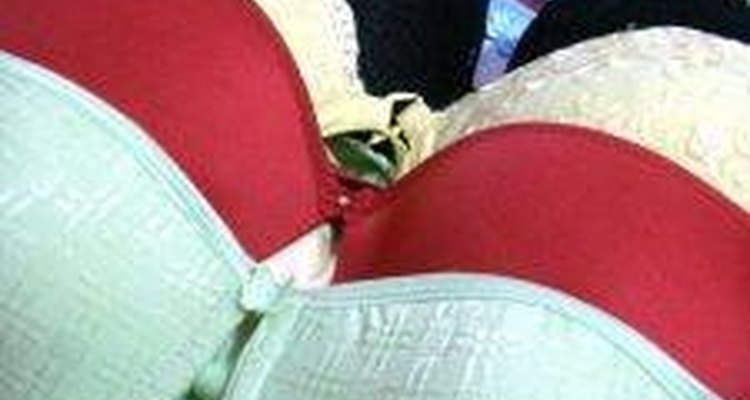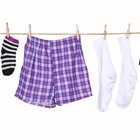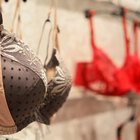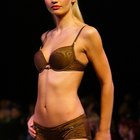
Bras, or brassieres, are undergarments worn by women to cover and support their breasts. Designers sell bras in a variety of styles, including the plunge bra. Plunge, or plunging, bras are made to be worn under low-cut shirts and make a woman's cleavage, or the depression between her breasts, visible. By lifting and separating the breasts, plunge bras also can create the illusion of deeper cleavage and therefore larger breasts.
The Facts
A plunge bra is designed to lift and separate the breasts, and it is defined by its low, plunging front, according to Biggerbras.com. Like the name implies, its design plunges between the breasts, allowing this type of bra to be worn with low-cut blouses without the bra being visible.
History
The precursors to modern day bras began as far back as the Cretan times, according to Fashion-Era.com. American "Vogue" magazine first used the word brassiere in 1907, making the modern garment concept more than 100 years old. According to "Discover Magazine," the first patent for a breast supporter was granted in the late 1800s to Luman L. Chapman of Camden, N.J.
Function
Bras include two cups in the front, with straps over the shoulders and a band around the ribcage that is clasped in front or back, depending on the style. Bras are worn to support the weight of breasts and limit their movement. By lifting the breasts off the chest, a bra can also create a more youthful appearance. As undergarments, bras also provide smooth lines under clothes. A plunge bra functions in these ways as well as providing visible cleavage and, in some cases, enhancing its appearance.
Types
Plunge bras can be made from a variety of materials, including cotton, lace, satin or combinations. Plunge bras can vary on how low they plunge. In addition to plunge types, bras come in a variety of types including bandeau, camisole, demi, push up, long line, sports, strapless and underwire, according to the Hot Lingerie Guide. Bras are available in a variety of colors, from the basic white to neon pinks, purples and blues. Plunge bras can close in the front or back, while other styles, such as the sports bra, are typically without closures and are pulled on over the head.
Size
bra sizes are not universal but are generally standardized within countries. In the United States, bras are labeled with a number, which refers loosely to the measurement around the ribcage, just below the breasts and a letter cup size, which is determined by the difference of the ribcage measurement from the measurement of the fullest part of the breast, such as 36A. The letters, which were first standardized by S.H. Camp and Company in 1933, range from the smallest, AA to the largest, up to L, according to Bare Necessities, which provides instructions for determining the correct bra fit and a conversion chart to determine the bra size in other countries.
Related Articles

The Advantages of Racerback Bras

What Is the Average Breast Measurement?

How to Make a Bullet Bra

What Bras Are the Best for a Big Chest ...

Difference Between Boxer Briefs & Trunks

What Does Bust Size Mean?

How to Decrease the Padding in a Bra

How to Put on a Long Line Bra

How to Measure Breast Size for a ...

How to Loosen a Tight Bra

Men's Underwear Types

How to Keep Your Side Bra From Showing

How to Convert Children's Clothing Size ...

Difference Between 44S & 44R Suits

How to Make a Regular Bra a Racerback

How to Wash Bras Using a Lingerie Bag

How to Hand Wash Padded Bras

What Are the Benefits of Wearing a ...

How Do Corsets Work With Breast Forms?

The Difference Between Loose & Relaxed ...
Writer Bio
Marilyn Walker is a communications professional living in New York City. She is originally from Oklahoma and holds degrees in journalism from Oklahoma State University (bachelor's) and the University of Maryland (master's). Walker has written professionally since 2004.
Photo Credits
Bras by aschaeffer on stock.xchng